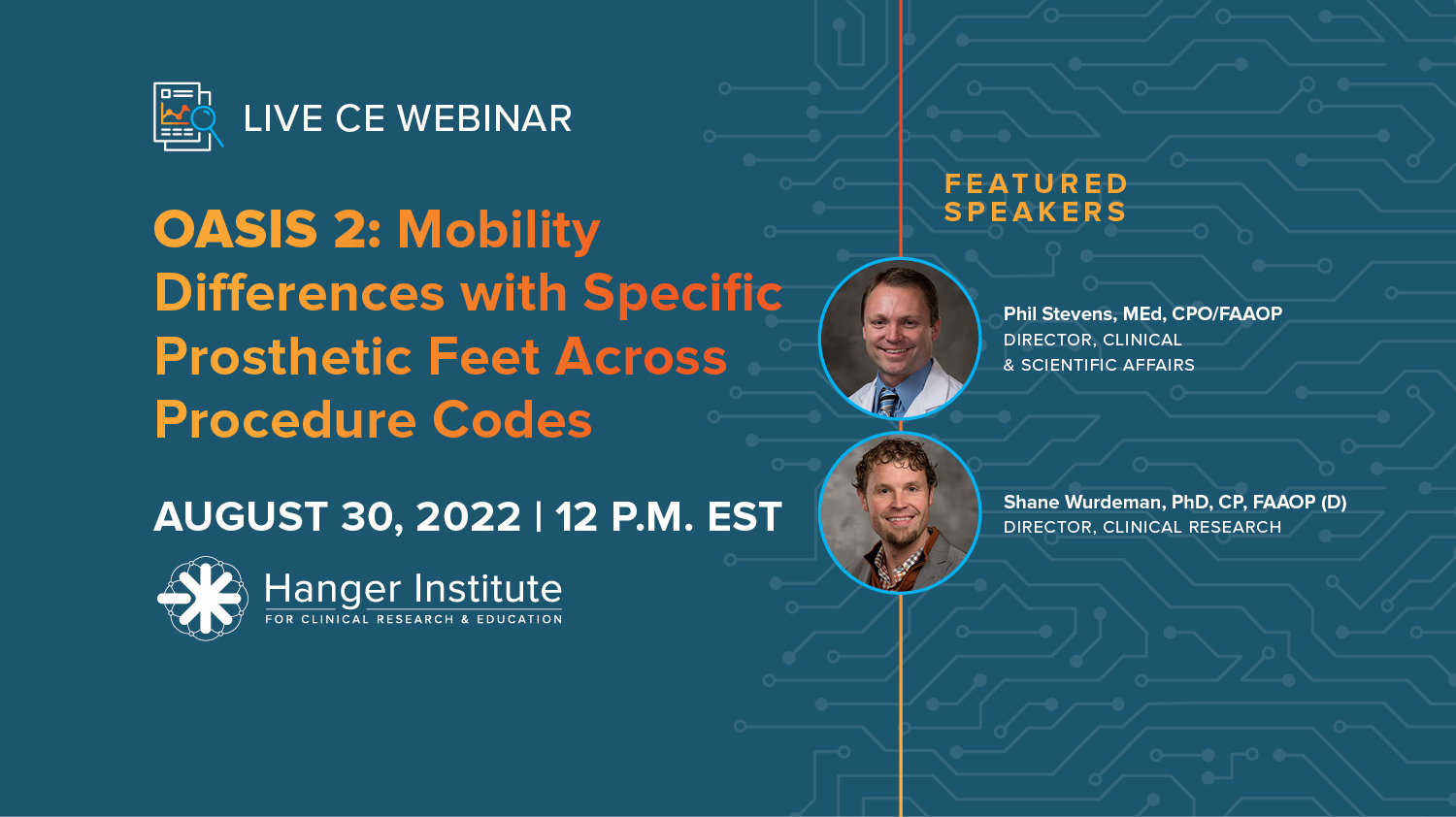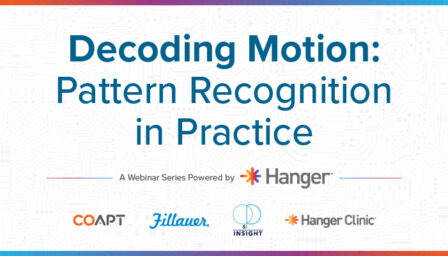OASIS 2: Mobility Differences with Specific Prosthetic Feet Across Procedure Codes

Date and Time
Location
Virtual Event
Cost: Free
CE Contact Hours: 60 minutes
This course has been awarded 1.25 Category I continuing education credits by the American Board of Certification in Orthotics, Prosthetics & Pedorthics. Credits will be submitted on your behalf for the full 1.25 (includes the quiz completion). All other healthcare professionals are welcome to submit for a certificate of completion to submit directly to your board.
Optimization of clinical outcomes remains the goal of the healthcare team working with limb loss patients. As a member of the patient’s interdisciplinary team, knowledge of how biomechanical properties may impact functional independence is imperative for driving a successful rehabilitation process.
Historically, visible features have been the predominant determining factor for reimbursement of prosthetic componentry. In the OASIS 2 study, the results suggest reconsidering that structure to focus instead on the impact the componentry has on a patient’s function and performance.
This course will provide participants information on the recently published research results of OASIS 2 and other studies as they relate to technology and the impact on patient’s mobility, pain levels and quality of life.
About the OASIS Series
The purpose of Outcomes ASsessment and DISsemination (OASIS) 2 was to compare patient-reported functional mobility across a range of prosthetic feet using real-world clinical outcomes data. It is the second study in the OASIS series by the Hanger Institute for Clinical Research and Education comparing the effectiveness of prosthetic components across patient groups to impact and enhance patient outcomes.
Objectives
Upon completion of this program, participants should be able to:
- Compare the impact on patient’s mobility when using L5981 versus L5987 componentry as described in recently published research results;
- Demonstrate how objective data from large study samples can inform clinical decision making better than relying on specific biomechanical features;
- Evaluate concerns and preconceptions that may lead clinicians to choose specific technology;
- Assess and compare K3 level options to optimize patients’ mobility and quality of life.
Session Outline + Timed Agenda
- Introduction: 5 min
- Retrospective Analysis of K3 feet research results: 10 min
- Torsion Units’ impact on patient mobility: 10 min
- New options in K3 foot componentry: 10 min
- Weight & Height Considerations for K3 feet: 5 min
- Hydraulic Ankle Foot mobility considerations : 10min
- Q & A: 10 min
Speakers

Phil Stevens, MEd, CPO, FAAOP
Vice President of Clinical Affairs
Phil is an Upper Limb Prosthetic Specialist as well as a Director within Clinical and Scientific affairs, where he develops evidence-based clinical programs designed to help patients improve their orthotic and prosthetic outcomes.

Shane Wurdeman, PhD, CP, FAAOP(D)
Chief Clinical Officer
Shane is the Director of Clinical Research within Clinical and Scientific Affairs. He entered the field of O&P as a technician before transitioning to working as an orthotist/prosthetist, and finally into his role as a principal investigator.
Related Events

July 30, 2025
From Code to Care: Expanding Access to Pattern Recognition in Upper Limb Prosthetics
This session provides critical insights into Healthcare Common Procedure Coding System L6700, a newly approved reimbursement code representing the integration of myoelectric pattern recognition within an upper limb prosthesis.

August 27, 2025
Foundations of Pattern Recognition: Principles, Evidence, and Patient Candidacy
This course introduces therapists to emerging care strategies for individuals following upper limb amputation, with a focus on integrating pattern recognition technology into rehabilitation.